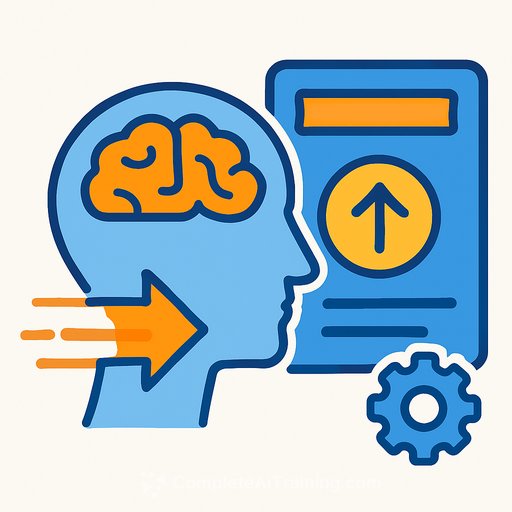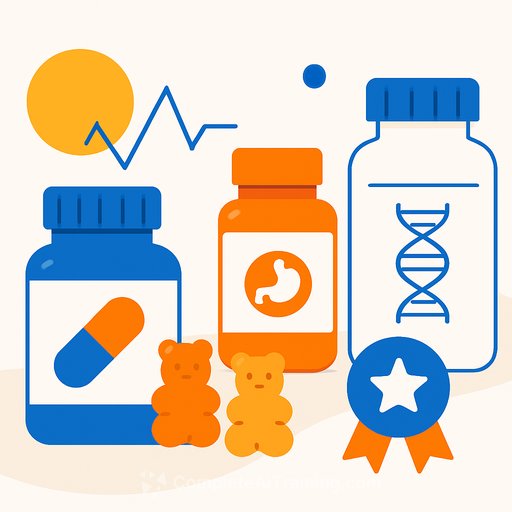The AI-Driven Company: Building AI-First Products
AI-first products don't add models to existing software. They start with the model, the data it needs, and the feedback loops that keep it learning. Everything else - architecture, UX, business model - orbits that core.
This shift isn't cosmetic. It changes how you design, how you ship, and how you win. Think autonomous vehicles or generative co-pilots: without the model, there's no product.
What Makes an AI-First Product Different
Traditional software starts from features. AI-first starts from the data-model loop: capture data, label it, train, deploy, measure, feed back, repeat. The product exists to sense, interpret, act, and learn.
Feedback loops are everything. Every interaction should improve the model. Over time, you get capabilities you never explicitly coded - the system learns its way into them.
Architecture: Model-Centric by Default
Design from the inside out. The model and its data pipelines are the foundation, not an integration layer. Evaluation, deployment, and monitoring are core infrastructure, not afterthoughts.
- Data pipeline: collection, labeling strategy, privacy controls, drift detection
- Model lifecycle: offline tests, online experiments, rollback plans
- Runtime: low-latency inference, guardrails, human-in-the-loop where risk is high
- Product layer: UX built to capture high-signal feedback without friction
If you need a starting point for operationalizing ML, this MLOps overview is useful: Google Cloud: MLOps.
Compete on Learning Speed
Feature parity at launch matters less. Learning speed after launch matters more. The faster your product improves from real-world data, the stronger your moat.
Winners compound. Once the loop spins, competitors can't catch up without a step-change innovation - not just "better features."
Own the Learning Loop
Models are becoming commodities. Data isn't. The proprietary asset is your loop: how you collect, structure, and use data to improve outcomes that customers care about.
Move from one-time sales to recurring value tied to performance. If the model increases yield, reduces cost, or boosts revenue, price against the lift. That keeps your incentives aligned with product improvement.
Safety, Quality, and Compliance
"Does it work?" is the wrong question. Ask: "Does it learn safely, ethically, and reliably?" You'll need guardrails for data quality, bias, and model behavior - plus auditable processes.
- Data: lineage, consent, retention, quality checks, bias audits
- Model: red-teaming, adverse event logging, interpretable metrics
- Process: risk classification, human oversight for high-impact actions, incident response
If you ship in or to the EU, study the regulatory requirements early: EU AI Act.
Org Shift: From Pre-Launch Plans to Post-Launch Learning
Move more energy from planning to experimentation. Treat deployment as the start of the work, not the finish line. Your teams should ship smaller updates more often and let live data guide the roadmap.
Traditional firms with a hardware heritage often struggle here. The "atoms" still matter, but the "bits" now differentiate. Build cross-functional pods that own a model, a metric, and a slice of the product surface.
Metrics That Actually Matter
- Speed of learning: time from data capture to validated model improvement
- Model win rate: percentage of experiments beating the current baseline
- Outcome lift: measurable impact on customer KPIs (quality, cost, revenue)
- Safety score: rate of flagged events per 1,000 actions and time to mitigation
- Feedback yield: useful labels or signals captured per active user
A Practical Playbook for Product Teams
- Define the core learning task before any feature work. What must the model get good at?
- Map your data flywheel: sources, consent, labeling, enrichment, and where feedback comes from.
- Design UX for feedback. Make it effortless for users to correct, rate, or guide the model.
- Stand up the evaluation stack early: offline tests, canaries, online experiments, rollback.
- Ship with guardrails: input/output filters, policy checks, human review on high-risk flows.
- Tie pricing to outcomes. If you drive performance, share in the gain.
- Staff for the loop: PM, design, data, ML, and ops in one pod with a single business metric.
Examples to Ground Your Thinking
Autonomous vehicles rely on perception, planning, and control models. No models, no product. Generative co-pilots depend on large language or multimodal models to produce text, images, or actions from context. These aren't apps with "AI inside." They're AI systems packaged as products.
What Comes Next
The most transformative categories haven't arrived yet. Expect autonomous agents that negotiate, design, and optimize work on your behalf. Expect products that adapt uniquely to each user and systems that learn across entire ecosystems, not just single companies.
AI isn't just changing how we build. It's changing what a product is. We move from writing logic to training behavior, from shipping versions to guiding evolution, from upfront planning to ongoing learning.
Level Up Your Team
If your product org needs a focused way to upskill in AI and MLOps, explore curated learning paths by role: Complete AI Training: Courses by Job.
"Some people call this artificial intelligence, but the reality is this technology will enhance us. So instead of artificial intelligence, I think we'll augment our intelligence."
Your membership also unlocks:






